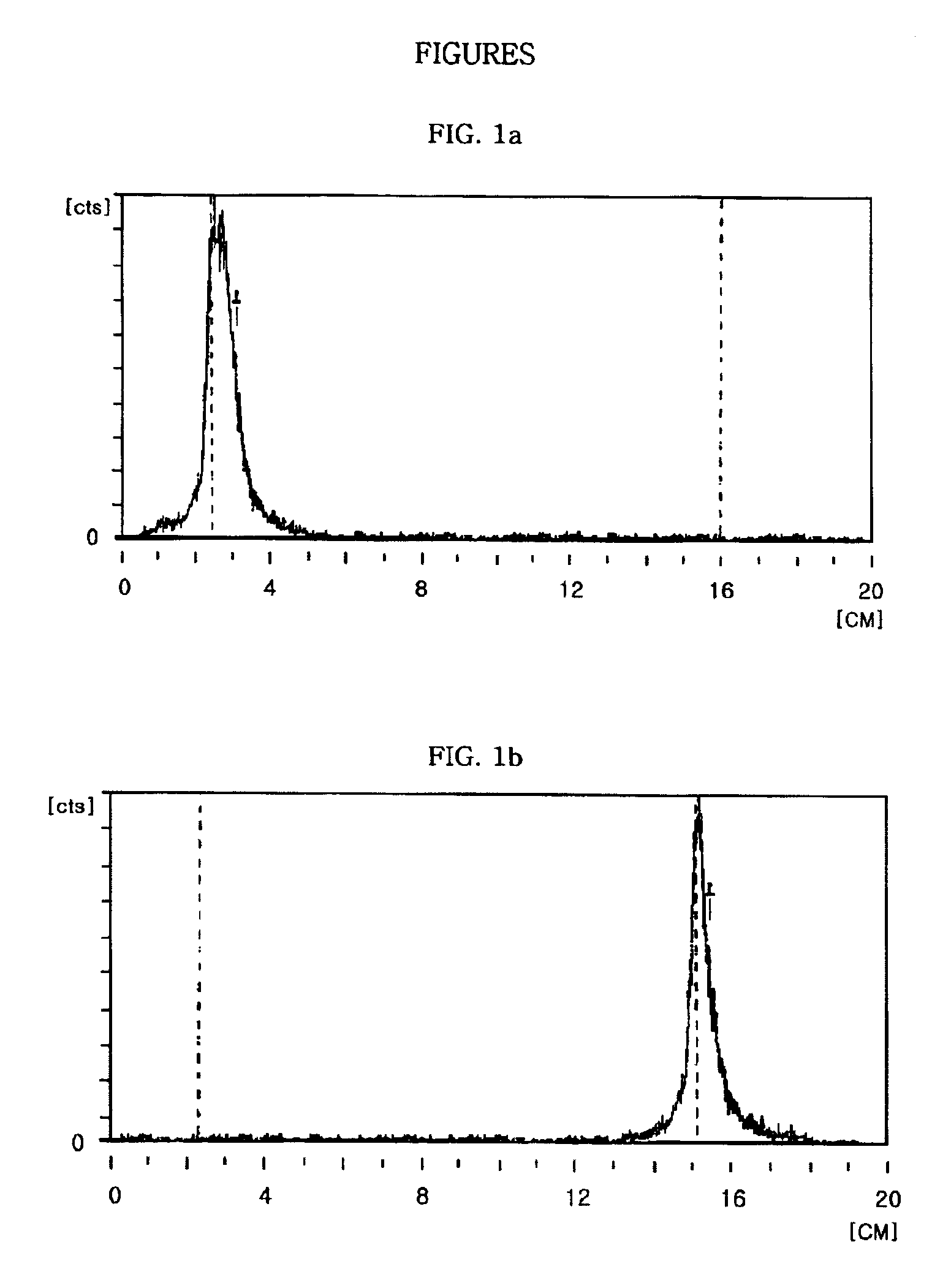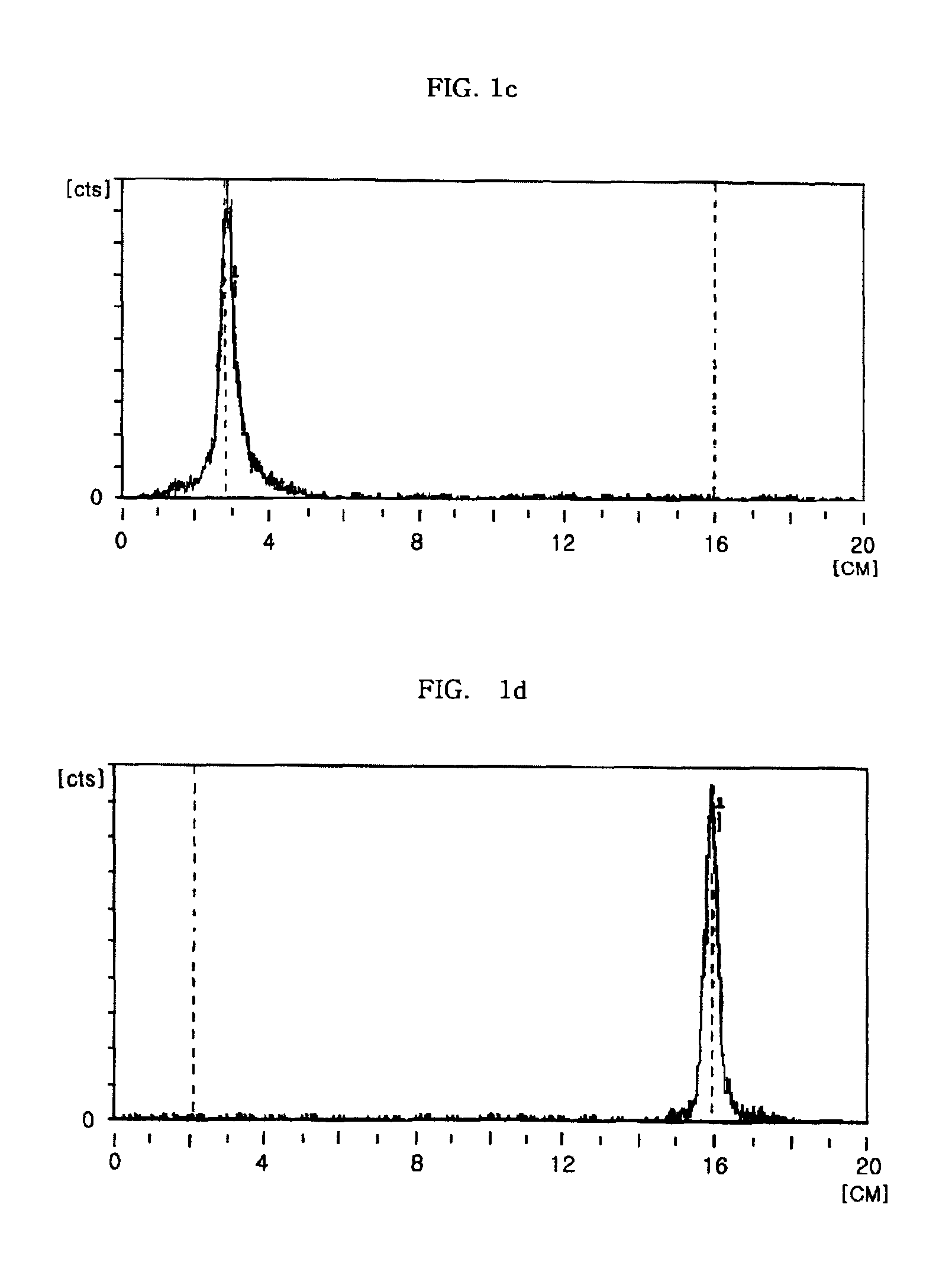Method for the preparation of technetium or rhenium complex for radiopharmaceuticals
a technology of radiopharmaceuticals and complexes, which is applied in the direction of immunoglobulins, peptides, therapy, etc., can solve the problem of limiting the amount of used reducing agents
- Summary
- Abstract
- Description
- Claims
- Application Information
AI Technical Summary
Benefits of technology
Problems solved by technology
Method used
Image
Examples
example 1
Preparation of 99mTc-L-cysteine
[0056]STEP 1: Preparation of 99mTc-glucoheptonate
[0057]Lyophilized glucoheptonate was first added to a vial containing 0.5 ml of a liquid solution of Na99mTcO4 (25 mCi) The reaction mixture was well mixed for about 20 sec at room temperature under nitrogen atmosphere, and the reaction was carried out until that the glucoheptonate powder was completely dissolved, thus forming 99mTc-glucoheptonate.
[0058]STEP 2: Preparation of 99mTc-L-cysteine
[0059]A liquid solution of L-cysteine-HCl.H2O, prepared by dissolving 1.0 mg of L-cysteine.HCl.H2O in 0.1 ml distilled water, and 0.1 ml of 99mTc-glucoheptonate (5 mCi) prepared in the Step 1 were added simultaneously to a vacuum vial containing 5.0 mg BER, and transchelation reaction was then performed. The reaction mixture was well mixed for 30 minutes at room temperature under nitrogen atmosphere. After mixing, the reaction mixture was filtered using a 0.2 μm membrane filter, thus giving 99mTc-L-cysteine, as a tec...
example 2
Preparation of 99mTc-DADS
[0060]To a vacuum vial containing 5.0 mg of BER were simultaneously added 99mTc-glucoheptonate prepared in Step 1 of Example 1, and a liquid solution of 3,3,10,10-tetramethyl-1,2-dithia-5,8-diazacyclodecane (diamine disulfide; DADS) as a ligand, prepared by dissolving 0.1 mg thereof in 0.1 ml distilled water, and transchelation was performed according to the same method as in Example 1, resulting in formation of 99mTc-diamine disulfide (99mTc-DADS), as a technetium-labelled compound of interest.
example 3
Preparation of 99mTc(H2O)3(CO)3L-cysteine
[0061]STEP 1: Preparation of a precursor [99mTc(H2O)3(CO)3]+
[0062]8 mg of sodium bicarbonate and 15 mg of BER were put into a 10 ml vial, and the vial was sealed with a rubber cover and held at room temperature for 30 minutes under CO gas. The vial was then supplemented with 6 ml of Tc-99m sodium pertechnetate (Na99mTcO4) (60 mCi) dissolved in physiological saline, and the reaction mixture was heated at 75° C. for 30 minutes under CO gas. After being cooled to room temperature in a chamber containing ice, and neutralized with 0.6 ml phosphate buffer (1M, pH 7.4), the reaction mixture was then filtered with a 0.22 μm membrane filter, giving a 99mTc-tricarbonyl precursor [99mTc (H2O)3(CO)3]+.
[0063]STEP 2: Preparation of 99mTc(H2O)3(CO)3 L-cysteine
[0064]0.1 ml of 10 mM L-cysteine.HCl.H2O was mixed with 0.9 ml of the 99mTc-tricarbonyl precursor [99mTc (H2O) 3 (CO)3]+, prepared in the above Step 1, and the mixture was heated at 75° C. for 30 minut...
PUM
| Property | Measurement | Unit |
|---|---|---|
| Temperature | aaaaa | aaaaa |
| Efficiency | aaaaa | aaaaa |
| Purity | aaaaa | aaaaa |
Abstract
Description
Claims
Application Information
 Login to View More
Login to View More - R&D
- Intellectual Property
- Life Sciences
- Materials
- Tech Scout
- Unparalleled Data Quality
- Higher Quality Content
- 60% Fewer Hallucinations
Browse by: Latest US Patents, China's latest patents, Technical Efficacy Thesaurus, Application Domain, Technology Topic, Popular Technical Reports.
© 2025 PatSnap. All rights reserved.Legal|Privacy policy|Modern Slavery Act Transparency Statement|Sitemap|About US| Contact US: help@patsnap.com



